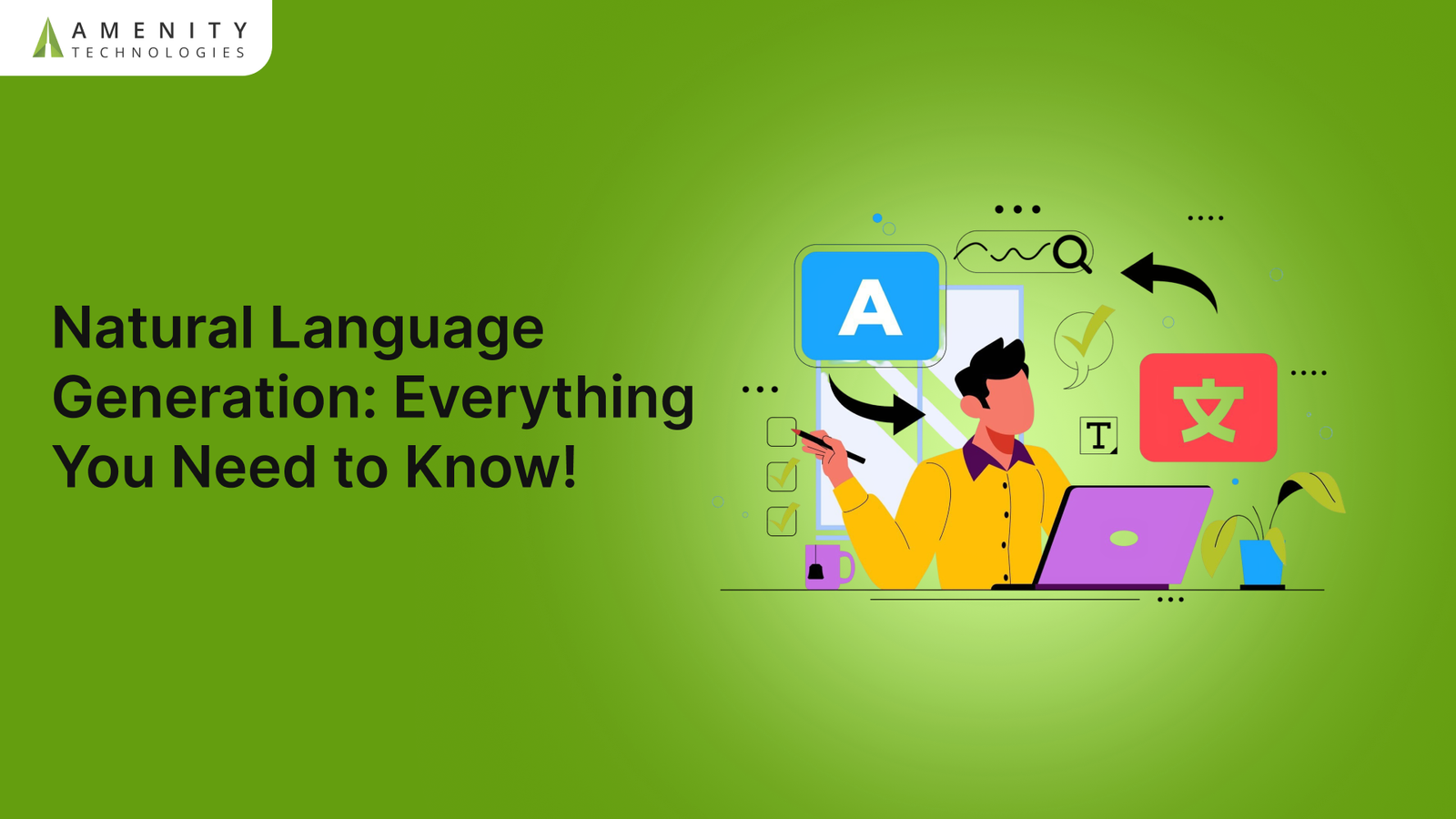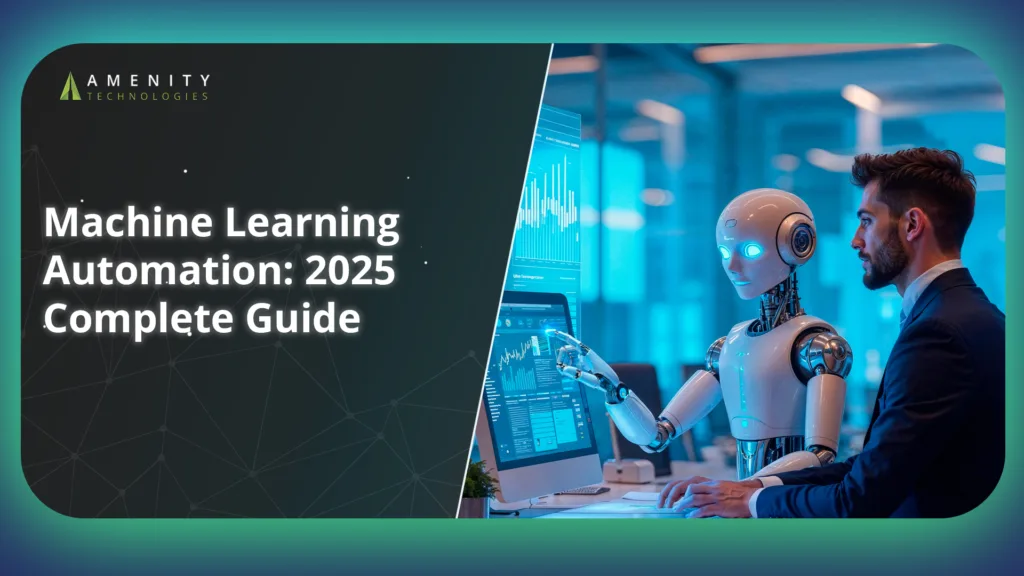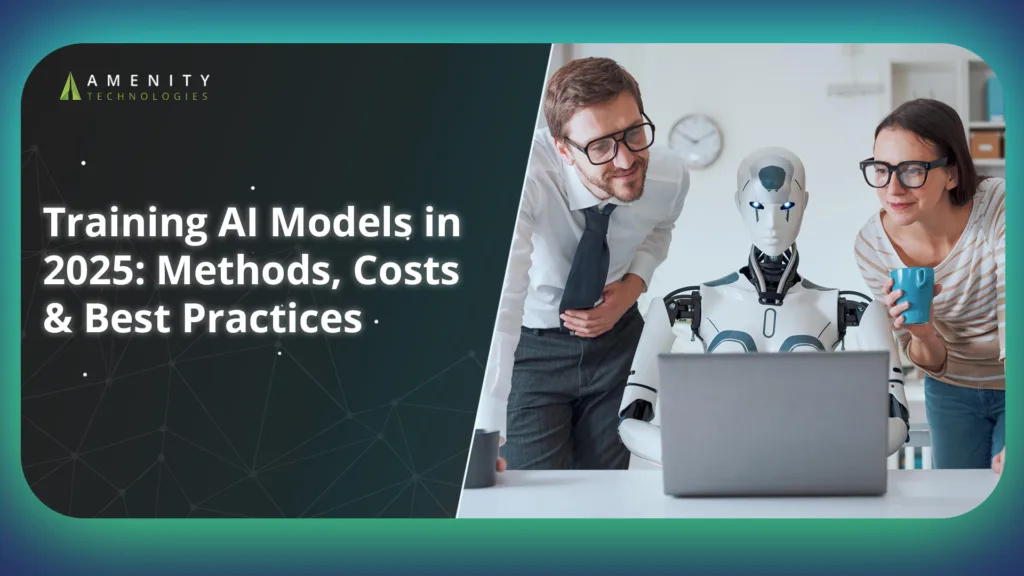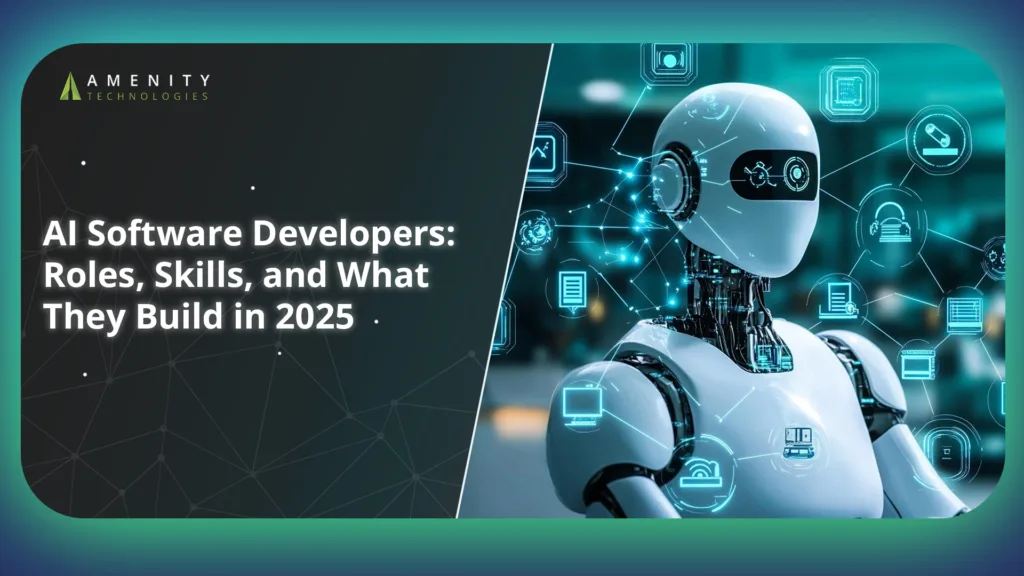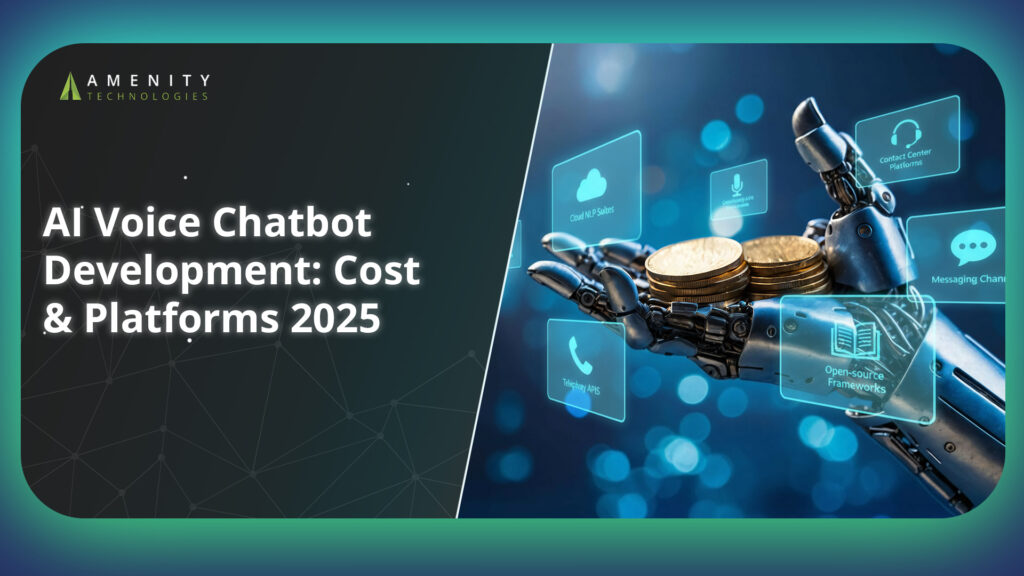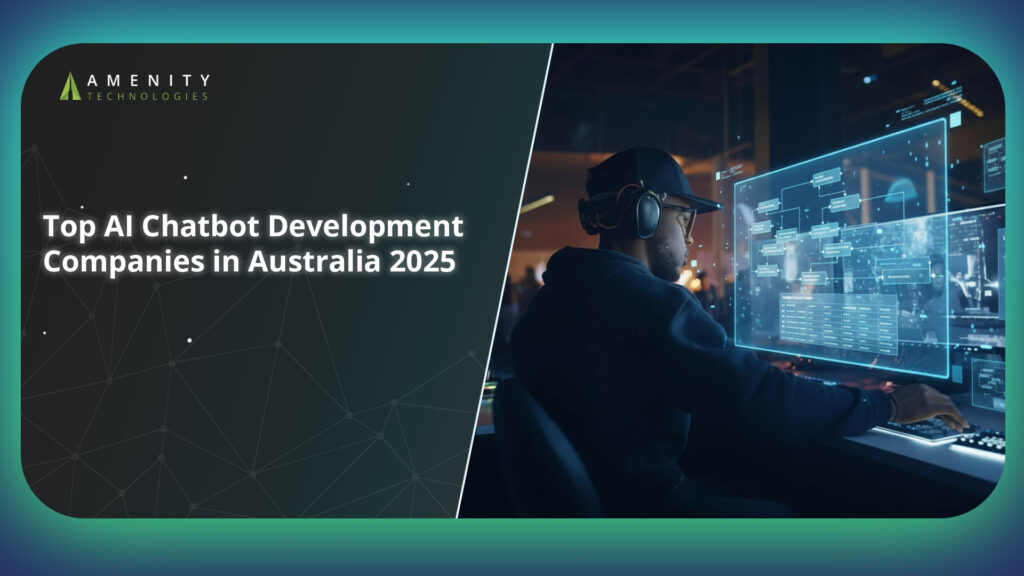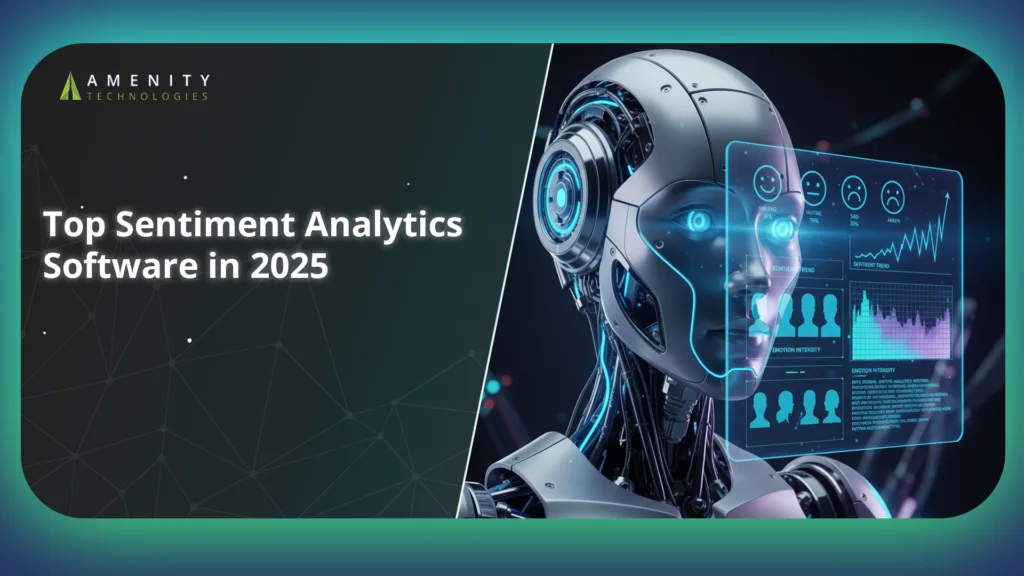Natural Language Generation (NLG) is reshaping how businesses handle content creation and data storytelling. Did you know the NLG market is projected to grow at over 20% annually, reaching $2.7 billion by 2026? With this rapid growth, how can companies keep up with demand for fast, accurate, and personalized text?
Advances in text synthesis now enable machines to convert complex data into clear narratives that resonate with audiences. Technologies like Retrieval-Augmented Generation and multimodal NLG are driving higher accuracy and richer communication.
What if your reports, marketing copy, or customer interactions could write themselves—saving time and reducing errors? This guide breaks down how NLG works, explores its latest trends, and shows how experts like Amenty Technologies are making automated content creation smarter and more reliable across industries.
What Is Natural Language Generation & Why It Matters?
Natural Language Generation transforms structured data into natural, human-like language. Unlike Natural Language Processing or Understanding, which focus on interpreting or analyzing text, NLG focuses on creating new content from data. This ability to generate coherent and contextually accurate text makes it valuable across many sectors.
NLG powers financial reports, customer service responses, and automated content at scale. For instance, Amenty Technologies builds custom NLG pipelines that automate complex tasks like earnings summaries and compliance documentation while keeping the tone precise and relevant.
The business impact of NLG is clear. Companies benefit from faster publishing cycles, fewer manual errors, and improved scalability in content creation. Sectors like banking, e-commerce, and logistics report significant efficiency gains through automated narratives, saving time and reducing operational costs.
By turning raw data into meaningful stories, natural language generation helps organizations communicate insights quickly and effectively, freeing teams to focus on higher-value activities.
Top Trends in Text Synthesis for 2025
The field of Natural Language Generation is moving fast, with new technologies shaping how text synthesis happens. Trends like emotion-aware generation and multimodal outputs are changing what automated content can do. Let’s look at the top trends in text synthesis:
1. Emotion-Aware & Tone Personalization
Modern Natural Language Generation adapts not just to the message but also to tone, intent, and even emotion. Amenty Technologies implements sentiment-infused workflows that help brands maintain a consistent voice across all customer interactions. This approach creates content that resonates better with audiences by aligning with their feelings and expectations.
2. Retrieval-Augmented Generation (RAG)
Retrieval-Augmented Generation improves factual accuracy by combining information retrieval with content generation. This method reduces errors or hallucinations often seen in automated text, especially in sensitive areas like legal or financial narratives. Amenty integrates RAG into their processes to ensure more reliable and trustworthy outputs.
3. Multimodal NLG
Text generation now includes voice and image descriptions, expanding the traditional scope of NLG. Amenty is exploring these cross-modal capabilities to offer richer experiences for industries such as retail and education technology. This trend allows content to engage audiences through multiple channels seamlessly.
4. Agentic NLG
Agentic NLG goes beyond text creation by interpreting data and taking actions automatically. Examples include reading invoices and sending email summaries. Amenty has successfully deployed these systems in document automation and backend reporting to improve operational workflows.
High-Impact Use Cases & Text Synthesis Applications
Natural Language Generation is transforming many industries by automating the creation of clear, personalized, and data-driven content. From marketing to enterprise insights, the applications of text synthesis are broad and powerful.
1. Marketing & E-commerce
Automated content generation enables brands to produce personalized product descriptions, promotional copy, and A/B testing variants instantly. This approach helps companies reach customers with messages tailored to preferences and behavior, increasing engagement and conversion.
2. Financial & Journalistic Reports
Many organizations rely on NLG to generate accurate financial summaries, earnings reports, and market updates from structured data. This reduces manual errors and accelerates report delivery. Clients in banking, insurance, and media sectors benefit greatly from these solutions.
3. Enterprise Dashboards & Insights
Transforming raw analytics into narrative summaries, NLG helps decision-makers quickly understand key trends and performance metrics. Embedded within business intelligence tools, these narratives provide concise, actionable explanations.
4. Conversational Agents
Adaptive chatbots powered by tone-aware NLG scripts offer smoother interactions that adjust to customer emotions and context. This technology supports improved customer service experiences in sectors like fintech and logistics.
Overcoming NLG Challenges & Pitfalls
Implementing Natural Language Generation comes with its own set of challenges. Addressing these issues is vital for reliable and effective text synthesis.
- Data Quality & Bias
The quality of output depends heavily on input data. Poor or biased data leads to inaccurate or unfair results. Amenty includes human oversight to review data and ensure fairness and consistency.
- Hallucinations
Even advanced models sometimes produce incorrect or fabricated information. Using Retrieval-Augmented Generation helps verify facts by cross-checking generated content with reliable sources, reducing errors in critical contexts.
- Tone Consistency
Maintaining a consistent brand voice across automated content is essential. Tools that monitor sentiment and style prevent robotic or off-tone outputs, preserving the natural flow customers expect.
- Integration & Privacy
Connecting NLG solutions with existing business systems requires careful handling of privacy and security. Expertise in linking ERP, CRM, and legacy platforms while adhering to compliance standards is essential to protect sensitive data.
How to Choose & Deploy Text Synthesis Tools?
Selecting the right tools for Natural Language Generation affects success in automation and content quality.
- Tool Profiles
Options range from well-known models like GPT-4 and Gemini to customizable open-source frameworks. Amenty offers APIs that embed industry-specific logic, ensuring that text generation fits unique business needs.
- Evaluation Criteria
Accuracy and the ability to handle long-context content matter most. Multimodal support and cost efficiency also influence decisions. Amenty’s solutions deliver over 90% precision on enterprise datasets.
- Pilot Blueprint
Starting with small, structured data projects allows for fine-tuning. Defining clear success metrics such as accuracy, tone, and readability ensures effective rollout. Guided pilots with regular feedback improve outcomes before full deployment.
Conclusion
Natural Language Generation has moved beyond theory into everyday business use. Companies seeking speed, scale, and accuracy rely on NLG for marketing content, automated reports, and customer service. Working with experienced partners like Amenty Technologies brings domain expertise and scalable deployment, turning text synthesis from a tool into a clear business advantage.
FAQs
1. What is the difference between NLG and NLP?
NLG focuses on creating natural, human-like text from data. NLP deals with understanding and interpreting existing language, such as analyzing sentiment or extracting information.
2. What is RAG in NLG?
RAG stands for Retrieval-Augmented Generation. It combines data retrieval with language generation to produce more accurate and fact-based content, reducing errors in generated text.
3. Can NLG mimic brand tone?
Yes, modern NLG systems can adapt tone, style, and even emotional cues to match a brand’s unique voice, ensuring consistent messaging across all communications.
4. Where is NLG used most effectively?
NLG shines in automating report generation, personalized marketing, conversational agents, and transforming complex data into easy-to-understand narratives.
5. How should companies adopt NLG?
Start with small pilots focused on specific use cases, set clear accuracy and tone goals, and gradually scale with expert guidance to integrate NLG smoothly.
6. What’s next in NLG?
Advances in multimodal generation and agentic systems that act autonomously will push NLG beyond text to fully interactive, data-driven experiences.


